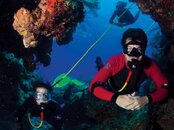Tigerman
Contributor
I have not taken the boat diving specialty, so I dont know how useful that is (but I have done most of my diving from boats, although all for my OW and AOW from shore). I do however think that before youll be able to tell how much gas you have in your tank just from how long you have dived (and knowing how deep you are/have been) you need a fair bit of experience though..Considering that it often gets just a little attention in OW and AOW I could actually imagine a "gas planning" specialty. Besides the land calculations part you could do dives where every 5-10 minutes you need to tell your instructor how much air you have left before looking at your SPG and other stuff like that. Seems like it would be more useful than something like a boat diving specialty.





